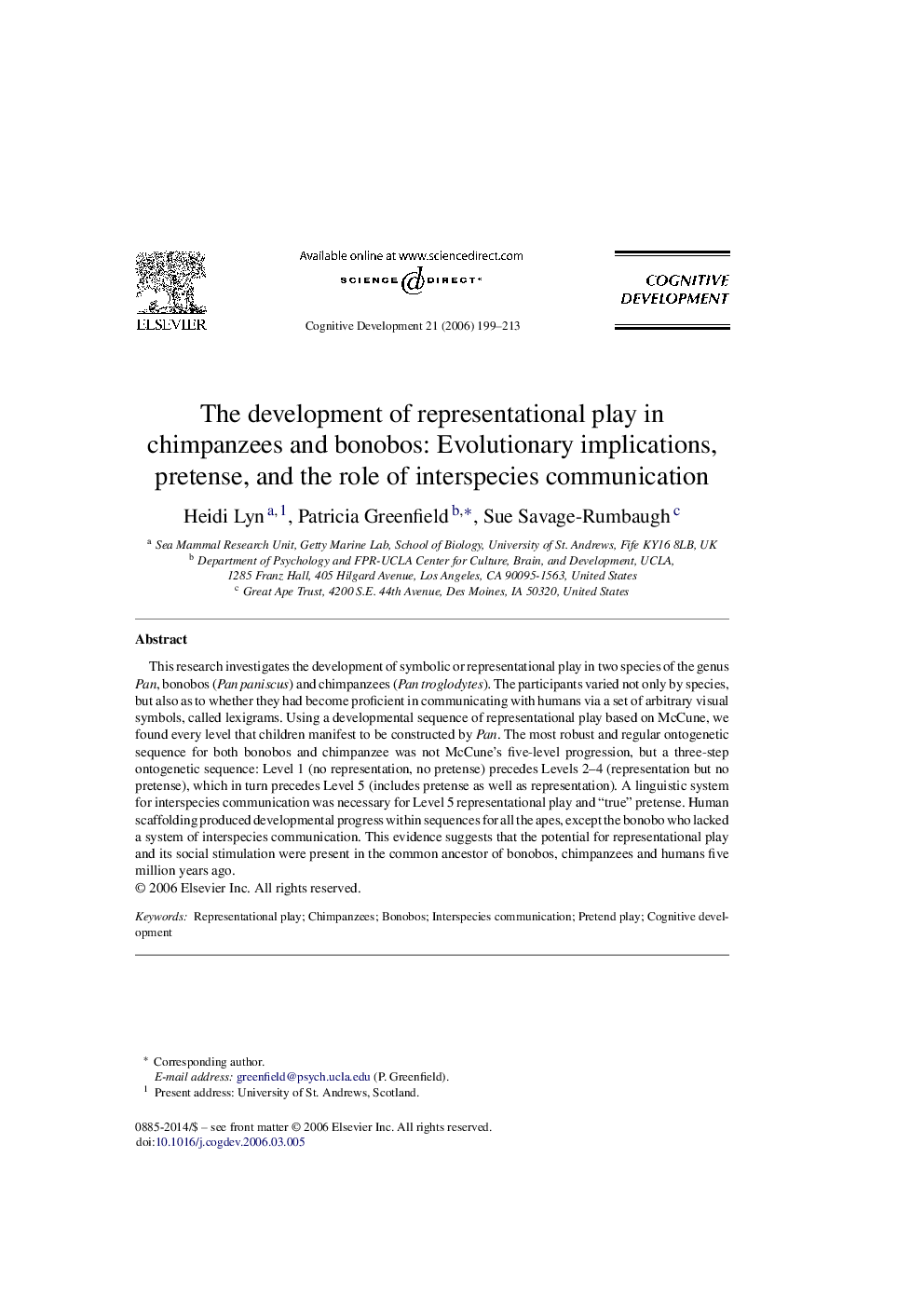| Article ID | Journal | Published Year | Pages | File Type |
|---|---|---|---|---|
| 916784 | Cognitive Development | 2006 | 15 Pages |
This research investigates the development of symbolic or representational play in two species of the genus Pan, bonobos (Pan paniscus) and chimpanzees (Pan troglodytes). The participants varied not only by species, but also as to whether they had become proficient in communicating with humans via a set of arbitrary visual symbols, called lexigrams. Using a developmental sequence of representational play based on McCune, we found every level that children manifest to be constructed by Pan. The most robust and regular ontogenetic sequence for both bonobos and chimpanzee was not McCune's five-level progression, but a three-step ontogenetic sequence: Level 1 (no representation, no pretense) precedes Levels 2–4 (representation but no pretense), which in turn precedes Level 5 (includes pretense as well as representation). A linguistic system for interspecies communication was necessary for Level 5 representational play and “true” pretense. Human scaffolding produced developmental progress within sequences for all the apes, except the bonobo who lacked a system of interspecies communication. This evidence suggests that the potential for representational play and its social stimulation were present in the common ancestor of bonobos, chimpanzees and humans five million years ago.
